Share This Article
Learn more
With the general ease of use we’ve come to expect from DJI drones, the DJi Avata 2 offers a high-quality FPV drone that satisfies the needs of both novice and expert pilots. One of those businesses that never fails to surprise is DJI. Who would have thought that we would be greeting the DJI Avata 2 together with new goggles and controllers less than two years after the release of the well-liked DJI Avata?
Many improvements have been made to this new model, solidifying its position as one of the greatest drones on the market and among the top FPV kits for both novice and expert FPV pilots. Due to its more aerodynamic design and marginally reduced weight than its predecessor, the Avata 2 has extended flying periods in real-world scenarios by several minutes.
Key Takeaways
- FPV: Better resolution, lower latency.
- Compact: Lightweight, portable.
- Sensors: Obstacle avoidance.
- Flight: Longer battery.
- Camera: 4K, stabilized.
- Controls: Intuitive.
- Modes: Multiple options.
DJI Avata 2 OVERVIEW
If you’ve ever flown a DJI Avata, you know how simple it is to take control and accelerate from learning to fly to full speed. Anyone can fly an Avata since the motions required to do so are natural when using DJI’s Motion Controller.
For example, let’s use myself. I don’t fly FPV that often. I’m definitely not out there flipping about and flying in and out of buildings with them, and I don’t create any of them. During a UVT public safety drone demo last summer, I had my first experience with FPV during a one-minute flight demo. Indeed, Avata is being used by law police to clear houses.

Description
The DJI Avata 2 builds upon its predecessor to provide a more advanced FPV drone, goggles and controllers that meet the needs of most FPV pilots regardless of experience.Positives
- Simple to use with an FPV drone
- Excellent video quality
- Two controller alternatives
Negatives
- Not appropriate for still photography
- FPV goggles are not for everyone
- Manual mode requires time to learn
I completed the lesson, put on the goggles, and turned everything on for the first time last week. DJI puts you in Beginner Mode by default, which is similar to the older drones’ cinema flight mode. I was ready to switch it off and go full speed after about thirty seconds, which is exactly what I did. Almost instantly, I smashed into a playscape. I apologize.
DJI Avata 2 SPECS
| Dimensions | 7.28 x 8.34 x 2.52 in / 185 × 212 × 64 mm |
| Battery | 2420 2150 mAh / up to 23 minutes |
| Charger type | Type-C to Type-C PD Cable / Three Battery Charging Hub |
| Modes | Normal, Sport, Manual (Manual only with FPV Controller 2) |
| Video transmission range | Up to 8 miles / 13 km (FCC) / up to 6.2 miles / 10 km (CE/SRRC/MIC) |
| Video resolution | 4K, 2.7K, 1080p |
| Frame rates | 4K up to 60 fps / 2.7K up to 120 fps / 1080p up to 120 fps |
| Weight | 13.30 oz / 377 g |
Thus, despite being merely a drone, there are many things to consider with the DJI Avata 2. Let’s discuss it and then revisit the question of whether or not this drone is worthwhile buying.
DJI Avata 2 DESIGN
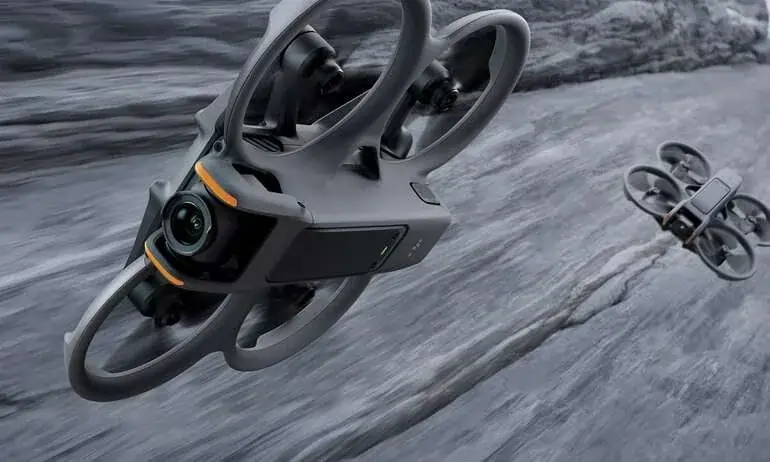
Propeller guards are included into the design of the Avata 2 in the cinemawhoop style, shielding the propellers and any debris in the event of a crash. With measurements of 7.28 x 8.34 x 2.52 inches / 185 × 212 × 64mm, the Avata 2 is shorter than its predecessor but somewhat wider and longer. Additionally, the 46GB of onboard storage and computer-based firmware updates via DJI Assistant 2 are now possible thanks to the relocation of the USB-C port to a more practical side location that is also easier to reach. Underneath the same rubber cover is also the microSD card slot.
Related Posts
With a weight of only 13.30 oz (377 g), the airframe has become more aerodynamic and flying times have been somewhat extended to an advertised 23-minute maximum. Prior to Return To Home (RTH) being triggered when the battery reached 20% capacity, flight durations in real-world testing averaged 16 minutes of intense flying. By canceling RTH and returning at a reduced percentage, you could increase the length of your journey.
Offering mechanical stabilization on the vertical axis, the camera is positioned at the front of the drone. Through the use of RockSteady 3.0, HorizonSteady, or a switch, additional electronic stabilizing is available. More experienced FPV pilots might choose the latter option because of the wider angle of view and ability to stabilize footage using the free third-party Gyroflow program.
As part of the Fly More Bundles, the pilot will find the DJI Motion 3 Controller. To fly ahead, squeeze the trigger, and tilt the device forward or backward to ascend and descend. Simple left or right controller tilting is all that is needed to turn.
Additionally, a circle displayed in the FPV goggles provides a visual depiction of the drone’s flight path much like a Motion 3 target. In addition, the DJI Avata 2 may be controlled with the joystick on the controller to fly up, down, left, and right. To fly backward, simply push the trigger.
The DJI FPV Remote Controller 3 is a standard DJI FPV controller that, by default, enables you to fly the Avata 2 more like a camera drone for more seasoned FPV pilots. The Avata 2 functions primarily like a typical camera drone, but you can still enjoy immersive FPV flying and video capture.
Two hex screws located behind the rubberized grip on the back of the controller must be turned in order to release the throttle stick spring and set the controller to manual mode. When the drone is in the air, you must first enable manual flight and make certain adjustments to the controller settings in the goggles menu.
- Cinewhoop design
- Reduced weight compared to Avata
- Two controller options
- Unlock Adrenaline-Pumping Immersive Flying - Prompt visual feedback through goggles as if you...
- Intuitive Motion Control - Effortlessly control the drone's movement with your hand, no complex...
- Compatible with DJI Goggles 3, DJI Goggles N3, DJI Goggles 2, DJI Goggles Integra, DJI RC...
Last update on 2025-04-23 / Affiliate links / Images from Amazon.
DJI Avata 2 FUNCTIONALITY
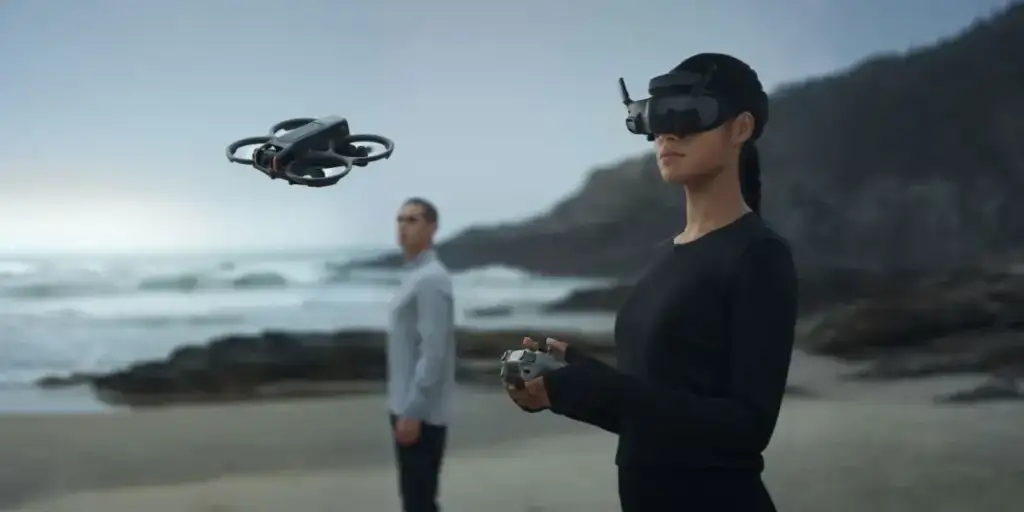
When it comes to “smart” functions, traditional FPV drones are usually relatively rudimentary, but the Avata 2 has capability that is characteristic of more sophisticated camera drones. This incorporates Fisheye Visual location, Return to Home, GPS location (GPS, Galileo, and BeiDou), and ToF sensors covering the bottom and rear views for obstacle detection. It also includes hovering when not in manual mode. In order to assist you in finding the drone in the event of a crash, the goggles also have a beeper that you may activate.
Turtle Mode, a function shared by traditional FPV drones like cinewhoops, enables the pilot to remotely flip the drone in the event that it flips upside down. Even though it might seem like a lot, not having to constantly physically collect the DJI Avata 2 after crashes can save a ton of time. This can be enabled via the DJI Goggles 3 menu or linked to a personalized button on the FPV Remote Controller 3.
With DJI 04 Video Transmission, the new DJI Goggles 3 offer a sharp and clear 1080p 60fps video from the FPV camera. With a battery pack integrated into the convenient, adjustable head strap, these have a slightly different design from the previous iteration.
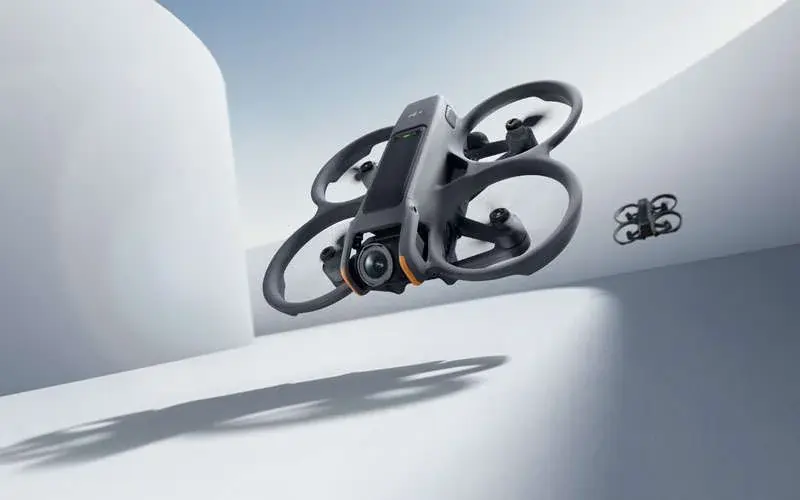
The goggles are comfortable to wear generally, while the forehead pad is a feature that may or may not be beneficial in improving comfort. Because of the sharpness and magnification they offer, lifting or removing the goggles is a more effective way to see your surroundings than using the FPV view, which also has cameras on the front.
Using the 5D button on the goggles or the DJI Motion 3 Controller, which uses an AR cursor to choose options, users may access the Goggles 3 menus and settings. Furthermore, the Avata 2’s camera doesn’t significantly suffer from fisheye distortion at specific drone angles, so the image seen through the goggles appears reasonably natural.
You can accomplish a lot with the Motion 3 Controller and it makes flying remarkably simple and straightforward. The drawback is that you can’t fully utilize the drone’s agility when compared to flying in Manual Mode with the DJI FPV Remote Controller 3. It’s much harder to quickly react to incoming obstacles that could cause a crash, like small tree branches that are visible in the goggles just moments before impact.
FPV drone crashes are frequent, and even the simple Motion 3 Controller cannot prevent a crash if you clip an object while flying through or past it. For peace of mind, the DJI Refresh is definitely worth the money.
Avata 2, Goggles 3, and Motion 3 now come with Easy ACRO as one of their new features. These are a three-man maneuver set that, when used with a flight simulator that supports the FPV Remote Controller 3, allows Motion Controller users to experience just a small portion of what can be accomplished in Manual flight mode, which requires some learning.
- Return to Home
- Turtle Mode
- Easy ACRO
Easy Left/Right Roll, Easy Front/Back Flip, and Easy 180° Drift are a few of these. These are simple, but they can give newbie videos a sense of FPV dynamism. Many more features are available for the two controllers and FPV goggles, but these are only a few of the most significant ones that have been mentioned thus far.
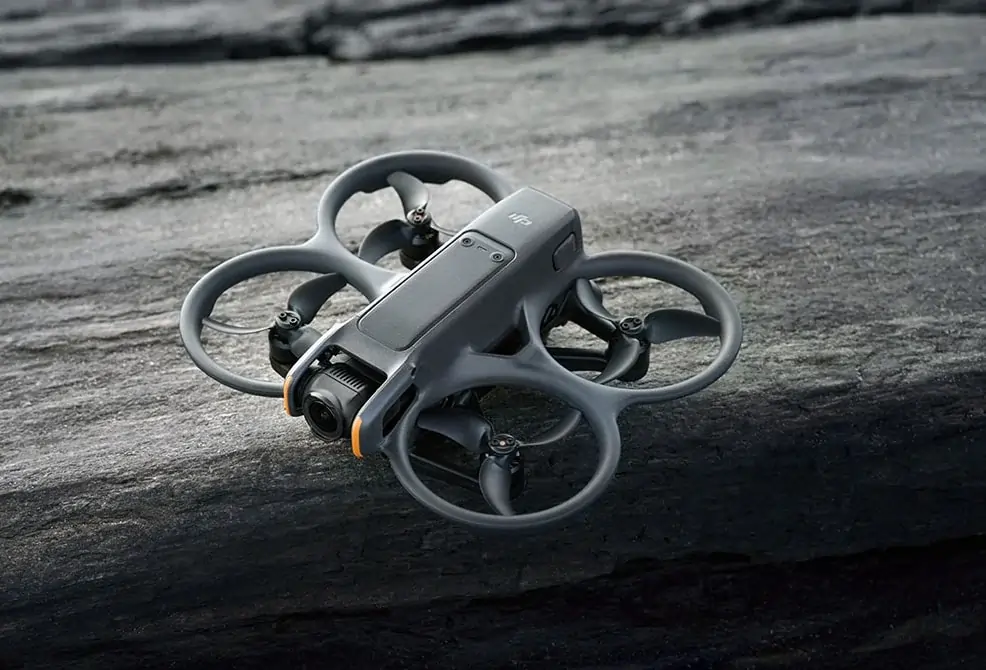
Open areas naturally provide the best transmission between the drone and the goggles since they allow you to fly farther without experiencing any loss of digital image quality. Picture fragmentation is more frequent when there are obstructions like trees or buildings. Therefore, if you’re flying in a forest, for example, try not to fly too far away and even measure the distances using the motion controller. If you do start to lose signal, you may stop the drone in Normal or Sport Mode and keep it hovering until you’ve moved near.
Without a doubt, the DJI Avata 2 is nimble. In fact, its top speed in Manual Mode is 60.39 mph (or 42.50 mph in EU countries). Sport Mode allows for speeds of up to 35.79 mph, while Normal Mode has a speed limit of 17.89 mph. When it comes to Manual mode, which lowers the maximum speed, EU regions will suffer, but if you know how to fly in it, Manual is still a thrilling flight option.
When in manual mode, the Avata operates similarly to a real FPV drone, requiring you to manually level the drone after maneuvers and continuously adjust the throttle. Nevertheless, you may flip, roll, and plunge the drone in this mode to record the most thrilling video and have a ton of fun. The drone is easy to control and makes for enjoyable and exciting flights when used in manual mode.
When altering the settings for Manual Mode, leaving Attitude Limit enabled maintains the Avata 2 in Level Mode. This mode is similar to a beginner’s Manual Mode, with the drone auto-leveling and its roll and pitch limited. This must be turned off in order to fully enjoy Acro Mode. While the Avata 2’s flight periods are significantly longer than those of other cinewhoop drones, Acro Mode is neither easier nor harder.
DJI Avata 2 PERFORMANCE
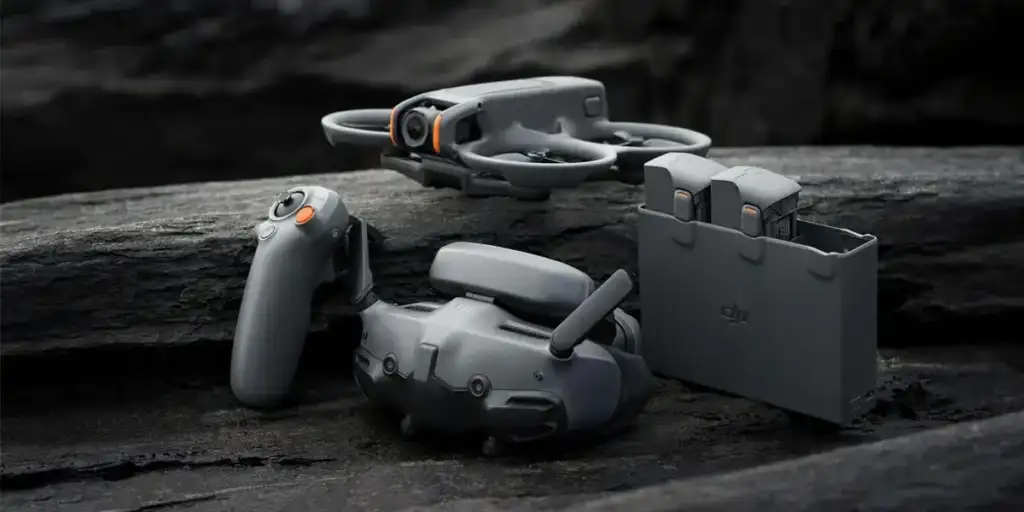
FPV drones aren’t meant for stills photography, and even while the Avata 2 can hover and take JPEG images, this is still not the case. The issue here is that, as the drone rolls into the wind, pictures are sometimes taken at strange angles, making horizons rarely straight. However, the Avata 2 produces really immersive footage, which is where FPV drones shine when it comes to video. Furthermore, the drone’s movement is superbly smoothed out by the Electronic Image Stabilization.
The FPV feed and video capture are only accomplished by one camera on the Avata 2, but it does it flawlessly. With a 155-degree field of vision and a 1/1.3-inch 12MP sensor, the camera offers a full-frame equivalent focal length of 12mm.
The fixed focus lens’s focal range is 23.6 inches / 60cm to infinity, with a fixed aperture of f/2.8. Although the main goal of the Avata 2 is to be fun to fly, it also ensures that nearly everything is sharp when capturing immersive FPV footage.
4K video may be recorded at up to 60 frames per second, while 1080p and 2.7K can record at up to 120 frames per second for slow motion. The maximum bandwidth, 130Mbps, is 20 Mbps less than that of the Avata. Two color profiles are available: Normal for footage straight out of the camera, and D-Log M flat for color grading and professional use.
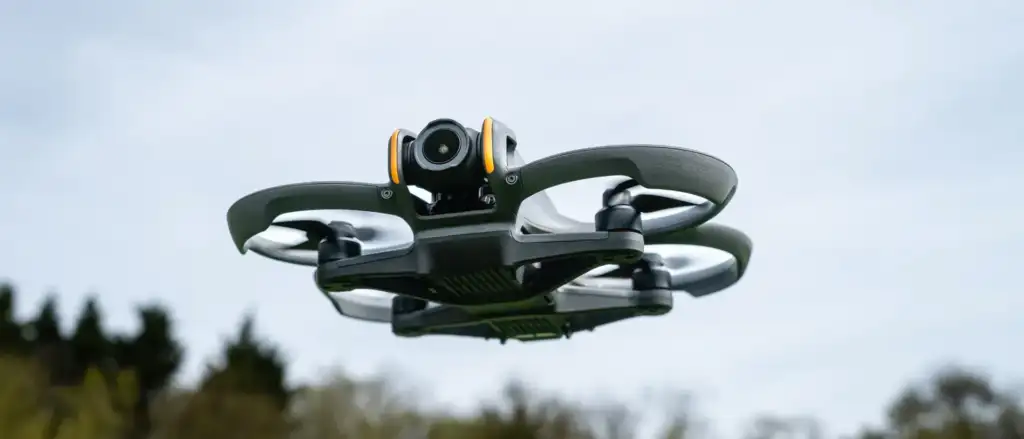
When flying between brighter and darker places, the camera can be set to Auto, which is helpful. However, for most scenarios, video footage shot in Manual offers consistency. For videos, keeping the shutter speed at the proper value requires ND filters.
If you want your video to look as natural as possible, you absolutely must have an ND filter set, which may be purchased separately. More experienced users could want to mount an action camera to the DJI Avata 2 in order to record video, and eventually, add-ons from other manufacturers will undoubtedly be accessible.
A histogram is a helpful camera feature that was missing from the review unit possibly due to pre-release firmware, but we’ll have to wait and see if it shows up and is very helpful for determining exposure and taking the guesswork out of exposure setting. There were, however, gridlines in the goggles; whether or not these are helpful will depend on individual preferences.
- 12MP 1/1.3-inch sensor
- Up to 4K 60fps video
- JPEG photos
DJI Avata 2 BOTTOM LINE
The DJI Avata 2 is the ideal option for those who wish to begin flying FPV drones in the most straightforward manner possible, without having to deal with all the complications associated with a regular FPV drone. Then, to immediately lower the chance of a major accident, you can get the DJI FPV Remote Controller 3 and learn how to fly using an FPV simulator if you want greater control and choose to learn how to fly in Manual Mode.
Because it combines the ease of use of a camera drone with the thrill and excitement of fixed-wing photography, the Avata 2 continues to be an alluring choice even for more experienced fixed-wing enthusiasts. It isn’t self-build the way you’re probably used to, and repairs are more difficult if you crash and damage the drone.
- Unlock Adrenaline-Pumping Immersive Flying - Prompt visual feedback through goggles as if you...
- Intuitive Motion Control - Effortlessly control the drone's movement with your hand, no complex...
- Compatible with DJI Goggles 3, DJI Goggles N3, DJI Goggles 2, DJI Goggles Integra, DJI RC...
Last update on 2025-04-23 / Affiliate links / Images from Amazon.
Why Trust Factic
Berry Alex has been evaluating, testing, and reviewing tech, Household and travel items for several decades. He compiled all of the testers’ input, conducted extra research to assess each phone mount’s essential features and overall functioning, and reviewed professional profiles and verified customer reviews for each product.



